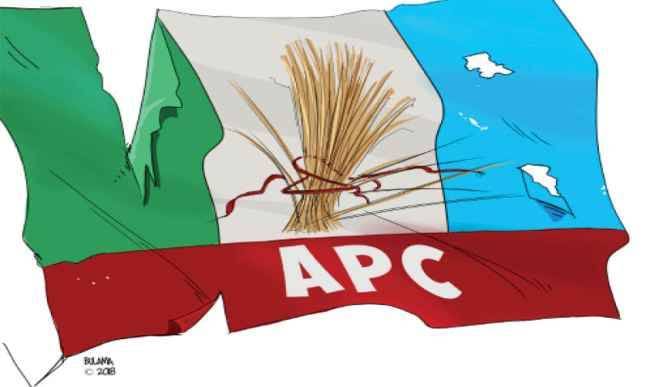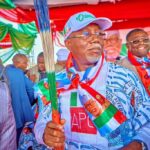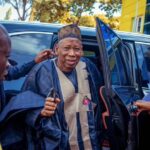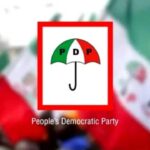In June 2015, shortly after the historic inauguration of President Muhammadu Buhari and his All Progressives Congress (APC), I wrote an unpublished article that sought to chart a political and policy direction for the then new government. I compared the APC coalition to a marriage between Israel and Palestine and suggested that if the union worked out well, the whole world would live in peace. But if it didn’t, I said, no one else would know sleep, at least not in Nigeria.
The article argued that President Buhari’s most important challenge was, therefore, how to hold together the political coalition that helped him dislodged then-ruling Peoples Democratic Party (PDP) from power, even more than how to deliver on his party’s campaign promises to Nigerians. I identified the coalition’s internal contradictions and urged the then-new president to do everything he could to keep things intact. Five years on, I now find myself seeing the #EndSARS protests last month as the clearest evidence yet of the deepening cracks within the APC itself.
- $5bn Needed To Implement National Broadband Plan – FG
- COVID-19: EU Still Issues Visas To Nigerians -Envoys
All political parties that have held federal power in Nigeria from 1957 to date have done so through some regional, rather than ideological, a coalition of sorts. All of them have also followed one of two paths to power. Some were formed when different regional parties merged into one dominant coalition that then took power, as in 1957, 1965, 2015 and 2019. Let’s call this the APC path. Others were formed when political interests from different regions merged from day one to form a winning coalition, as happened in 1979, 1993, and 1999-2011. This is the PDP path.
But the PDP, like the NPN and SDP before it, was a vertical and horizontal political coalition. That is, both the political elite and the voters were in sync with one another in each of the regions that formed it. That is, the political dog wagged the electoral tail at each turn during 1999-2011. This is not true of the APC however, and as we shall see, it is also in this respect that the APC is a much less politically stable entity than the PDP was at its peak.
The APC was formed by a merger of several parties and factions, but its dominant partners were always its Northern and South-Western flanks, represented by the President Buhari and Party Leader, Bola Tinubu. Still, the political influence of these two men in their respective regions is not as wholesome as many assume. While Buhari has had the majority of northern votes since 2003, he has never really won over the region’s political and business elite, except for political convenience or opportunism. Not a single politician from southeast and south-south regions challenged former President Goodluck Jonathan in 2011 and 2015. But Buhari faced a strong challenge from three northerners for the 2015 APC ticket alone, while his other contests in 2007, 2011, and 2019 also fielded major rivals from the north.
Moreover, if Buhari has faced a strong challenge from the northern region’s political elite, Tinubu’s situation in the southwest has been the exact opposite, but no less difficult, at least until now. Tinubu successfully led political elite from his region into an alliance with Buhari in both the 2015 and 2019 presidential elections. But the voters in the southwest have demonstrated much less political enthusiasm for that alliance, at least as evidence their vote tallies show in both elections so far.
Even with the second-highest number of registered voters by geopolitical zone, the southwest had the lowest turnout in both 2015 and 2019 presidential elections. Buhari’s total votes across the entire region were about the same as he got in Katsina and Jigawa states alone, and only slightly better than those for his PDP rivals. Still, while Tinubu’s organisational and financial clout within the southwestern flank of the APC have not been matched by vote count for Buhari relative to the region’s electoral strength, they have been more than enough to help Buhari reach the finishing line twice, which is all that matters in elections of any kind.
Two variables in this political in-equation within the party have changed ,however. The first is that Buhari cannot be a candidate at the next election and certain politicians in his northern camp are toying with the idea of looking for a new regional partner to go to bed with, citing the staggering difference in Buhari’s votes from the northwest and southwest in the past two elections.
The Tinubu camp in the southwest, on the other hand, are increasingly staring betrayal — a common and universal practice in politics — in the face, not least as evidenced in the recent Edo State governorship elections in which Buhari did little more than lift a finger to help his own party win. And so for good reason, the Tinubu camp is not taking it lightly, even for all the talk of internal betrayals within his own camp. This is the first crack in the APC’s ‘Blue Wall’, if we might call it that.
But how is this crack manifested in the recent #EndSARS protests? How might all the cracks in the APC play out in the near future and what would they portend for the party and for Nigerian politics as we trudge on to the 2023 presidential elections? The reader might wish to keep a date.

 Join Daily Trust WhatsApp Community For Quick Access To News and Happenings Around You.
Join Daily Trust WhatsApp Community For Quick Access To News and Happenings Around You.


